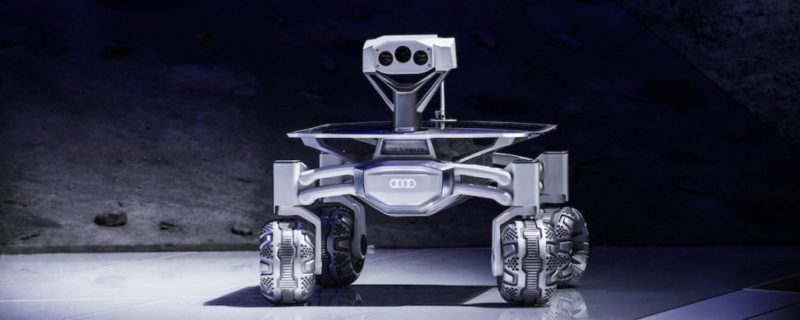Latest News

Audio’s lunar quattro Moon rover. Photo: PTScientists.
The Moon will get 4G coverage next year, 50 years after the first NASA astronauts walked on its surface. Vodafone plans to create the first 4G network on the Moon to support a mission by PTScientists in 2019 and has appointed Nokia as its technology partner.
Berlin-based company PTScientists is working with Vodafone Germany and Audi to achieve the first privately-funded Moon landing. Mission to the Moon is due to launch in 2019 from Cape Canaveral on a SpaceX Falcon 9 rocket.
Vodafone will connect two Audi lunar quattro rovers to a base station in the Autonomous Landing and Navigation Module (ALINA). Nokia, through Nokia Bell Labs, will create a space-grade ultra-compact network — a piece of hardware weighing less than a bag of sugar.
According to Vodafone, the 4G network will enable the Audi lunar quattro rovers to communicate and transfer scientific data and HD video while they carefully approach and study NASA’s Apollo 17 lunar roving vehicle that was used by the last astronauts to walk on the Moon (Commander Eugene Cernan and Harrison Schmitt) to explore the Taurus-Littrow Valley in December 1972.
Vodafone testing indicates that the base station should be able to broadcast 4G using the 1800 MHz frequency band and send back the first ever live HD video feed of the Moon’s surface, which will be broadcast to a global audience via a deep-space link that interconnects with the PTScientists server in the Mission Control Center in Berlin.
“This is a crucial first step for sustainable exploration of the solar system. In order for humanity to leave the cradle of Earth, we need to develop infrastructures beyond our home planet. With Mission to the Moon we will establish and test the first elements of a dedicated communications network on the Moon. The great thing about this LTE solution is that it saves so much power, and the less energy we use sending data, the more we have to do science,” said Robert Bohme, Chief Executive Officer (CEO) and founder of PTScientists.
Get the latest Via Satellite news!
Subscribe Now